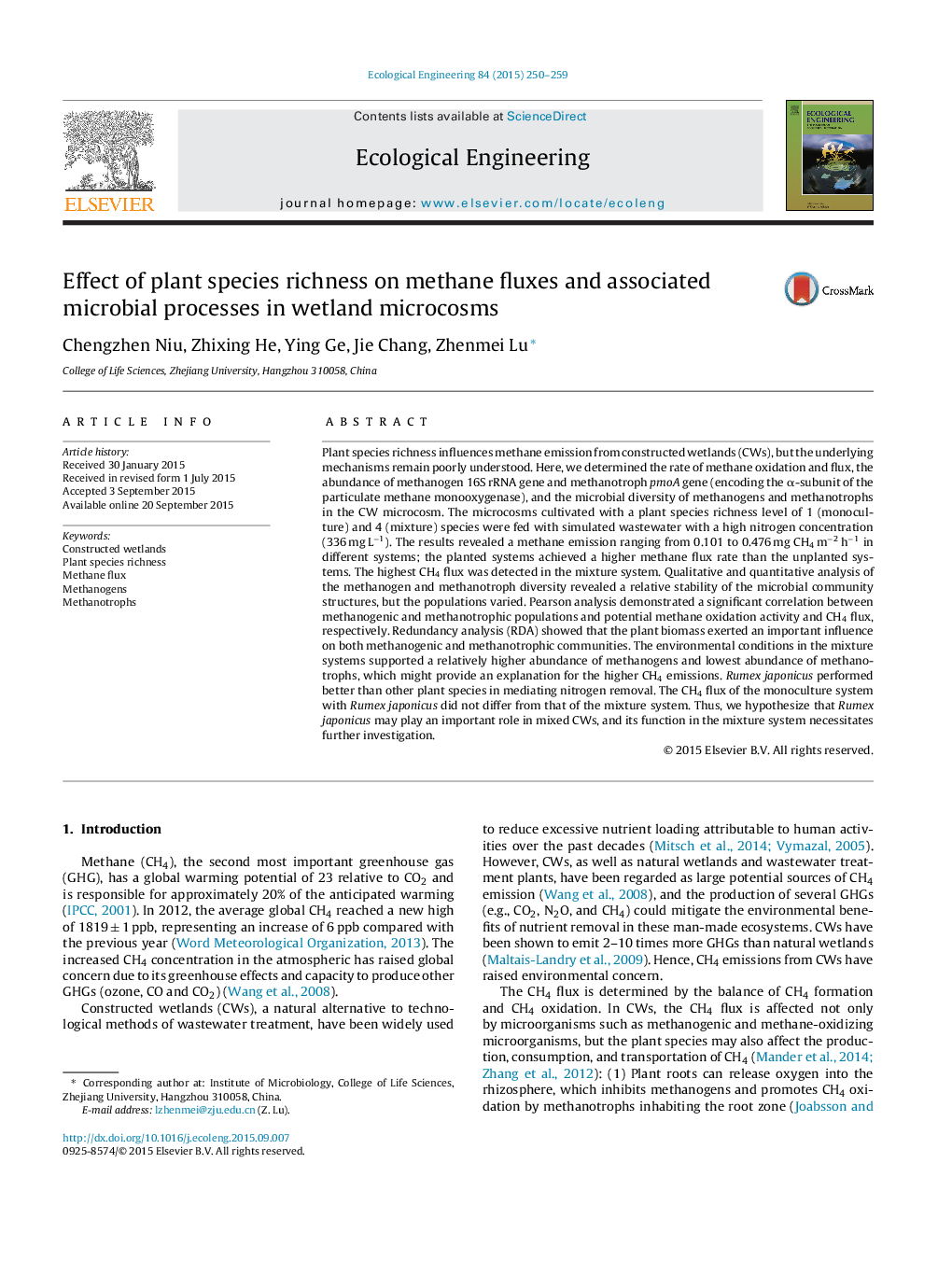| کد مقاله | کد نشریه | سال انتشار | مقاله انگلیسی | نسخه تمام متن |
|---|---|---|---|---|
| 4388790 | 1618015 | 2015 | 10 صفحه PDF | دانلود رایگان |
• Plant species richness enhanced CH4 flux in the wetland microcosms.
• The abundance and activity of methanotrophs negatively respond to plant species richness.
• Plant species richness showed limited influence on methanogenic diversity in present study.
• The Rumex japonicus monoculture system showed no difference with the 4 species mixture system in CH4 fluxes.
Plant species richness influences methane emission from constructed wetlands (CWs), but the underlying mechanisms remain poorly understood. Here, we determined the rate of methane oxidation and flux, the abundance of methanogen 16S rRNA gene and methanotroph pmoA gene (encoding the α-subunit of the particulate methane monooxygenase), and the microbial diversity of methanogens and methanotrophs in the CW microcosm. The microcosms cultivated with a plant species richness level of 1 (monoculture) and 4 (mixture) species were fed with simulated wastewater with a high nitrogen concentration (336 mg L−1). The results revealed a methane emission ranging from 0.101 to 0.476 mg CH4 m−2 h−1 in different systems; the planted systems achieved a higher methane flux rate than the unplanted systems. The highest CH4 flux was detected in the mixture system. Qualitative and quantitative analysis of the methanogen and methanotroph diversity revealed a relative stability of the microbial community structures, but the populations varied. Pearson analysis demonstrated a significant correlation between methanogenic and methanotrophic populations and potential methane oxidation activity and CH4 flux, respectively. Redundancy analysis (RDA) showed that the plant biomass exerted an important influence on both methanogenic and methanotrophic communities. The environmental conditions in the mixture systems supported a relatively higher abundance of methanogens and lowest abundance of methanotrophs, which might provide an explanation for the higher CH4 emissions. Rumex japonicus performed better than other plant species in mediating nitrogen removal. The CH4 flux of the monoculture system with Rumex japonicus did not differ from that of the mixture system. Thus, we hypothesize that Rumex japonicus may play an important role in mixed CWs, and its function in the mixture system necessitates further investigation.
Journal: Ecological Engineering - Volume 84, November 2015, Pages 250–259
